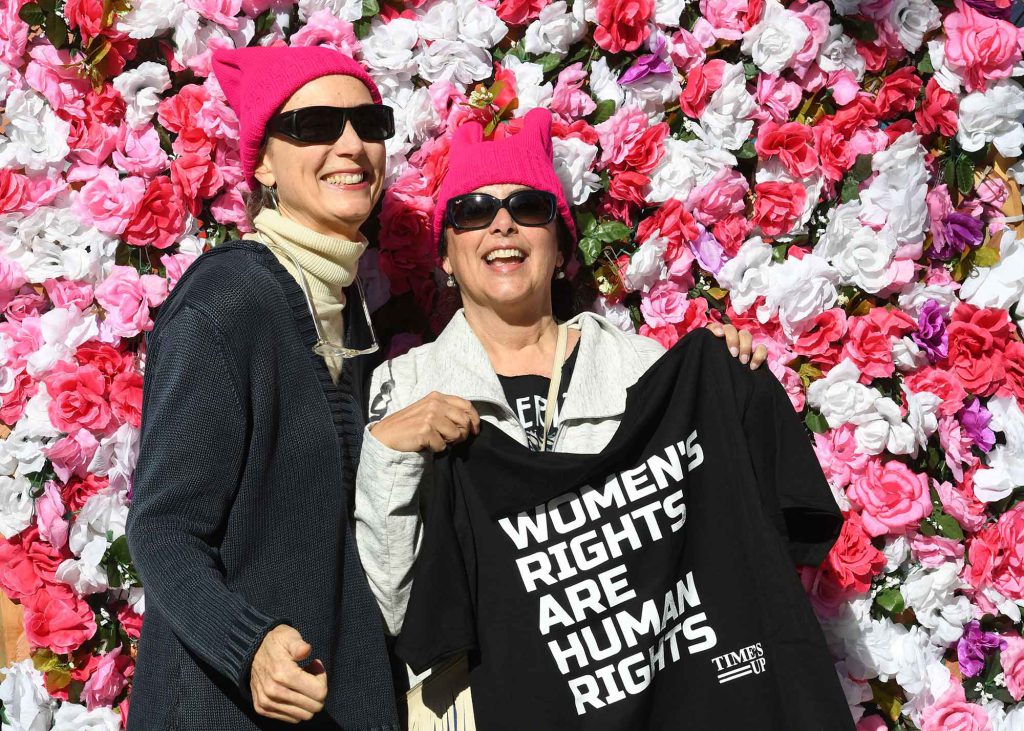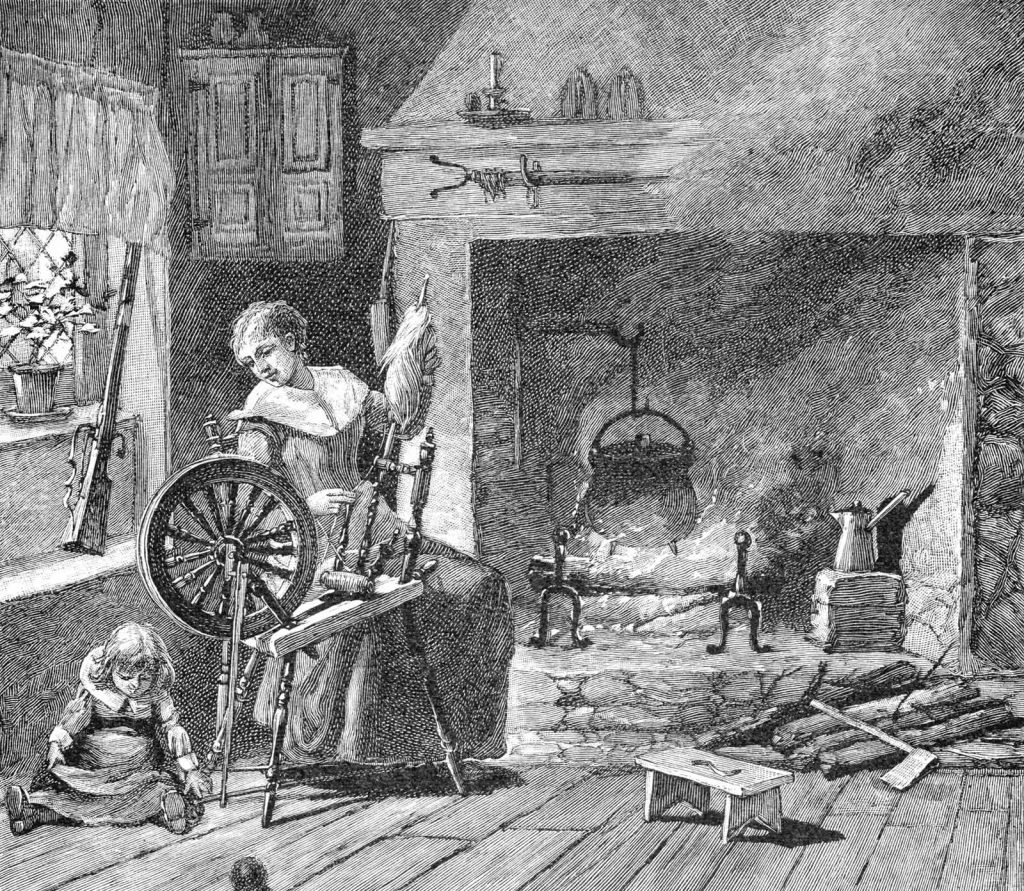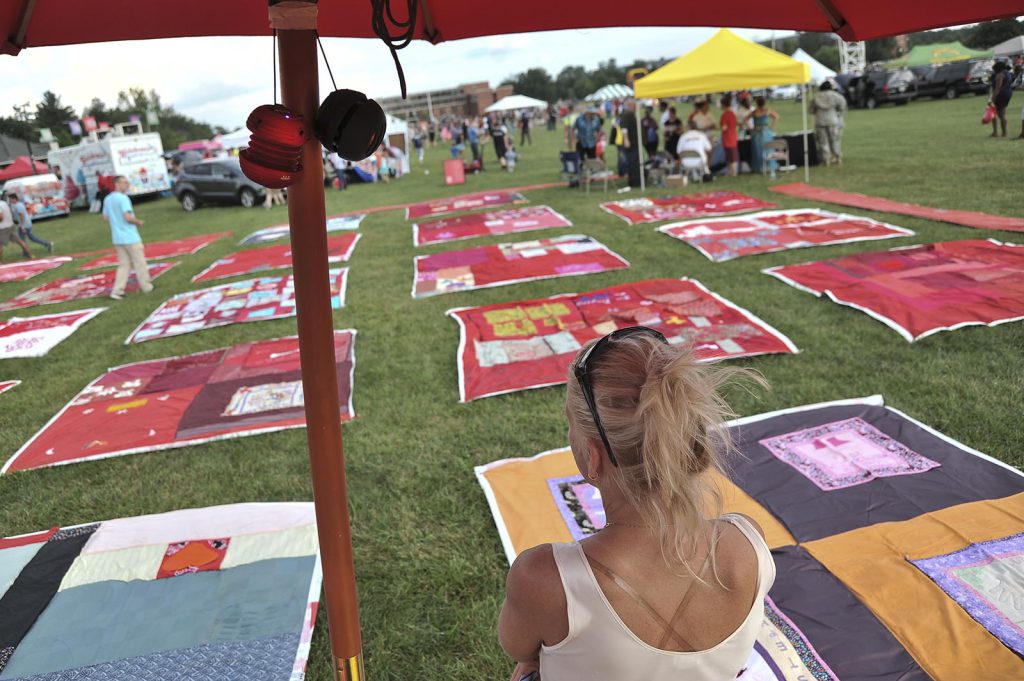The Pussyhat’s Identity Crisis

January 2019 marks the second anniversary of the Women’s March—a protest that arose in response to then U.S. presidential candidate Donald Trump’s “locker room talk” and to the expected policies of a man who dismissed his “pussy grabbing” remarks as harmless posturing. As the country marks two years of a Trump administration, we might reflect on the implications of the pussyhat, one of the most recognizable wearable political symbols of his tenure, perhaps second only to the bright red Make America Great Again caps. The pussyhat, though straightforward by design, has had a complicated reception—one that reflects various possibilities, oversights, and contradictions within feminism itself.
A bright pink knit cap with cat ears that might be said to mimic the labia, the pussyhat was created by artist Jayna Zweiman and screenwriter Krista Suh in 2016. The creators envisioned the National Mall awash in hot pink unity for the Women’s March, scheduled for the day after Trump’s inauguration in January 2017. The pussyhat, explained Zweiman and Suh, was for every resister: “Young and old, rich and poor. Educated and not, religious and secular. Straight and LGBTQ, every race and color. … a sea of pink … in protest against the rhetoric used toward women and minorities in the previous year’s state and federal elections.”
Creating a symbol that unifies “every resister,” though, might be harder than it looks.
Tens of thousands of people chose to wear the pussyhat at demonstrations around the country. A survey I administered a year ago probed the feelings of both proponents and opponents of the hat. Supporters saw the hat as a simple yet bold statement against misogyny that packed a visual punch; many felt empowered by such an unapologetic embrace of femininity.
Critics felt it excluded women with pussies that are brown or black, and women without female genitalia; further, the hat potentially perpetuated some of the very same stereotypes—women can be represented by their genitalia, pink means feminine—that the movement sought to avoid. Thus, the pussyhat, many resisters complained, took a step back toward gender and race normativity; it could not account for the complexity of the social challenges facing women today.
A truly unifying symbol of women’s rights has yet to emerge and may, indeed, be an impossibility.
While the pussyhat is just two years old, it is part of a much older story: one that knits together three waves of feminism and over a hundred years of point-making with needles.
The use of stitchery to incite social change is older than the United States itself. The production of homespun cloth in the colonies, for instance, was a way of protesting British taxes, including those on textiles. Quilting, sewing, and other needlework found a place in movements for abolition and women’s suffrage in feminism’s first wave during the 19th and early 20th centuries. In some ways, stitchery—a traditionally female craft medium done in safe, private spaces—was a good fit for early American women’s political activism.
Yet, the “needle arts” are just as spun up with issues of class and race as they are knitted to gender. Some have noted that in the 19th century, upper-class white women took advantage of the needle arts for political causes or just for fun, while women in marginalized groups often did so to make money as a matter of survival. These women were, in effect, excluded from “crafting for a cause” other than their own livelihood.
These exclusions find their parallels in later waves of feminism.
Feminists from the 1960s and 1970s, the “second wave,” dismantled and re-envisioned a broad range of roles and structures in pursuit of power and equality. For many, claiming control of their own bodies was paramount. Again, the needle arts were a common medium for protest and expression. For example, Judy Chicago’s art installation “The Dinner Party” (1974–1979) represented 39 major female historical or mythological figures using unique place settings for each on a massive triangular table. (The table shape was in reference to the vagina.) Intricate vulva-inspired embroidery was a central component of her piece.
Race and class divisions affected second-wave feminism too. Take the issue of reproductive rights. Arguments for the “right to choose” took for granted that women of all races and classes made this choice under similar circumstances. However, today, many scholars acknowledge that assaults on the bodies of women of color must be contextualized differently. Historically, women of color have experienced unwanted pregnancies as a result of rape, often by white men, which was a means for men to secure white patriarchy’s control over these communities. Such acknowledgments were mostly missing from mainstream second-wave feminist protests, which, as third-wave and postcolonial feminist critics have argued, operated with a certain ahistoricism and based their movement on sisterhood as a universal experience.
Beginning in the mid-1990s, feminism’s third wave engaged with a broad set of issues, including sex positivity, body positivity, and race-, class-, and sexuality-based inequality, in an attempt to correct for the oversights of their forebears. This wave of feminism also found an outlet in the needle arts. The Monument Quilt, for example, which originated in 2013, patchworked together more than 1,000 stories of survivors of sexual violence with healing stitches. More recently, Australian performance artist Casey Jenkins garnered millions of clicks on a 2013 video of her art installation “Casting Off My Womb.” Jenkins spent 28 days knitting a 15-meter-long scarf-like textile from wool that she had placed inside her vagina each day: The scarf starts out white, then bleeds into red, then returns to white through the course of a full menstrual cycle. The project both aimed to normalize biological processes and body parts that are typically considered “gross” or “impure,” and validate feminine needle-based handicrafts as a high art form. As yet another example, in 2014, a knitting collective called The Yarn Mission was founded to challenge systems of oppression facing the black community through showcasing and supporting the creations of black needle-artists.
Whereas the Pussyhat Project sought to create a pink wave, millions strong, in the name of women’s rights generally, most third-wave feminists argue that the notion of “womanhood” as a singular experience is misguided: race, sexuality, class, gender, and more intersect to form overlapping social identities and multiple and simultaneous experiences of oppression. No one hat or symbol of identity can capture that.
The pussyhat seemed to epitomize the possibilities, oversights, and contradictions that have made repeat appearances within feminism over the years. In 2017, I sent out an online survey via social media just before the one-year anniversary of the Women’s March, asking people about their perceptions of the cap. While the survey specified that only those who had marched on January 21, 2017, should respond (whether they wore a pussyhat or not), anyone who came across the survey on my account, or the accounts of those who reposted the survey, could answer the questions. The 78 people who answered my survey were overwhelmingly cisgender (96 percent) and white (91 percent); most were straight (77 percent) and lived in the U.S. South (78 percent). Significantly, about a quarter identified as asexual, bisexual, gay, graysexual, lesbian, or queer. About a third of respondents had worn a pussyhat.
What made the hat iconic for some was what made the hat feel overly simplistic for others.
Perceptions of the pussyhat varied considerably, regardless of how the respondents identified. Very few held a purely positive or purely negative opinion of the hat; critical perspectives were not solely held by those who claimed one or more minority identities.
The main issue, it seemed, was the difficulty of using a single symbol to speak for all women’s experiences. Often, respondents identified a positive and then took issue with it. Things about the hat that made some feel included were precisely the things that made others feel excluded. As one respondent explained, “Some chose not to wear the hat for the same reasons others chose to wear it.” What made the hat iconic for some was what made the hat feel overly simplistic for others.
One respondent wrote of the hats, “It was great to see so many people of all genders, colors, ethnicities all wearing them. I felt like I was part of a huge movement.” Another agreed with this inclusive view: “For me, the pussyhat symbolizes a revolution, an opportunity to claim societal space for women and minority groups and allies.” Another replied, “I thought it was good at the time because it was simple, easy to make, and a way to reclaim the word from [the] 45[th president]’s vulgar remarks about assaulting women.” (However, this person acknowledged, “some were offended by the pink color as being white-privileging.”)
Other respondents considered the hat frivolous and exclusive around issues ranging from gender identity to race. One respondent wrote plainly, “It’s transphobic, perpetuating the myth that all women have vaginas. Many trans women do not.” Another communicated a common tension: “I was drawn in by the visual power of the hat idea and interested in wearing something that would shove our message in the faces of those who wish to dismiss or demean women. But then I decided that the mission of the march was too serious for ALL WOMEN to be so easily represented by a pink pussyhat.” Further down in the survey, this respondent referred to the pussyhat wearers as a “trendy white girl club of Cute Pink Everything.” A different respondent observed that “the hats seemed to be predominantly worn by white women (even though one of the original creators is a woman of color), and it sometimes seemed like people were more focused on the hats than the issues the Women’s March aimed to highlight.”
For some, the pussyhat represented a selfish kind of feminism: Those who wore it and turned up for this march left many women—black women, immigrant women—to fend for themselves in other rallies, while, simultaneously, hoping they would fill the ranks at the Women’s March. As one of my respondents noted, the pussyhats have “become symbolic of the type of upper-middle-class white privileged feminism where women show up to the march as a big exciting event and then don’t return home to their local Black Lives Matter demonstrations or don’t call their representatives about DACA [Deferred Action for Childhood Arrivals].”
On the one-year anniversary of the Women’s March in January 2018, protesters took to the streets again for Power to the Polls, the theme of the 2018 marches designed to get out the vote in the year’s mid-term elections. Stereotypically female, body-based imagery remained prominent in protest signs and regalia: One sign, for example, featured a drawing of a uterus and read, “I am not ovary-acting.” Another sign asked, “Can we acknowledge the elephant in the womb?” Pussyhats, of course, were out and about too. However, various extensions of the Women’s March discouraged attendees from wearing the hat and instead encouraged them to wear something that better evoked collective liberation. Although many respondents to my survey would have agreed, the question remains as to what, exactly, might have fulfilled this daunting request.
As the second anniversary of the Women’s March approaches, the search for the ideal feminist symbol continues. In addition to its logo of silhouetted red, blue, and white facial profiles, the Women’s March 2019 has selected the Women’s Wave as a rallying hashtag, which appears as a bright, multihued blue curl at the corner of some advertisements for the event: “On January 19, 2019, we’re going to flood the streets of Washington, D.C., and cities across the globe. The #WomensWave is coming, and we’re sweeping the world forward with us.” Pussyhats will most definitely make an appearance, though many wearers are customizing yarn colors to be more inclusive of other causes. Blue, pink, and white pussyhats mimic the trans flag, for instance, while rainbow colors invoke the LGBT pride flag.
In light of all the ongoing complications, it remains to be seen if a single unifying symbol can knit together the revolution—or whether it will unravel into its constituent coalitions.


































